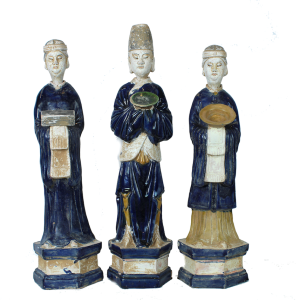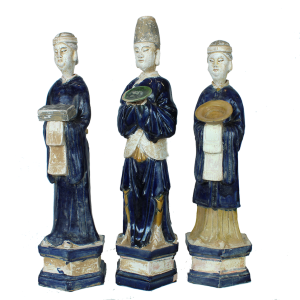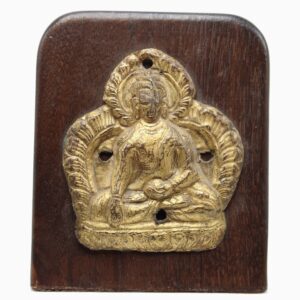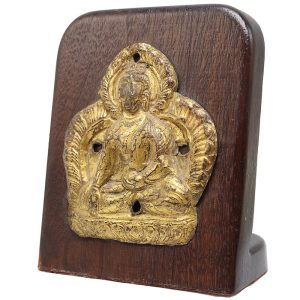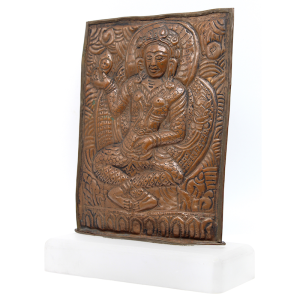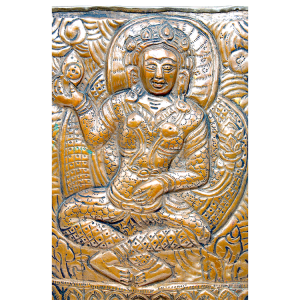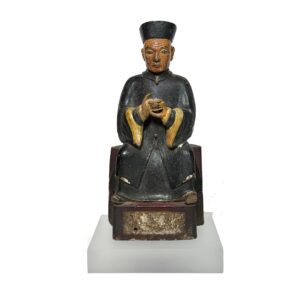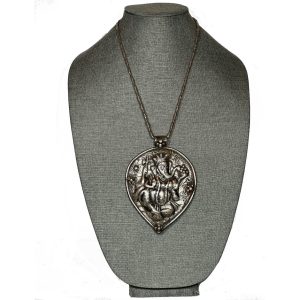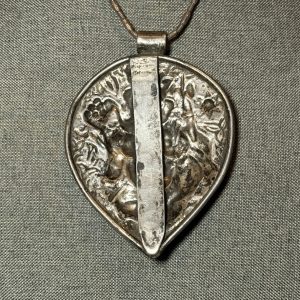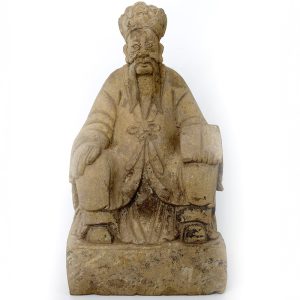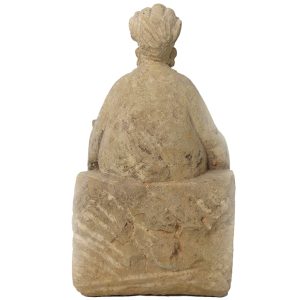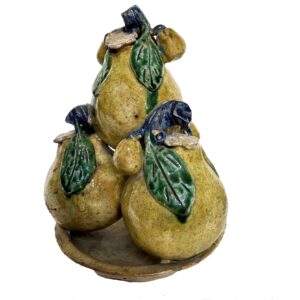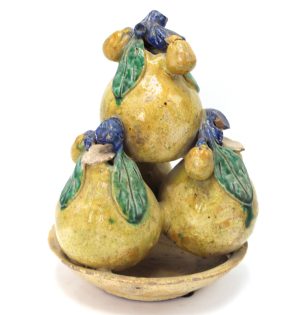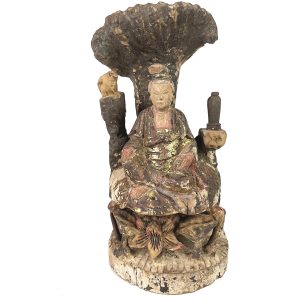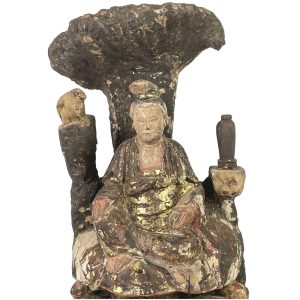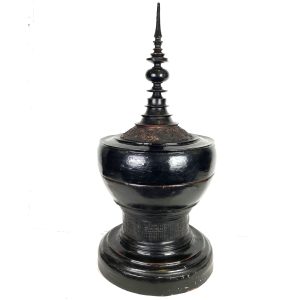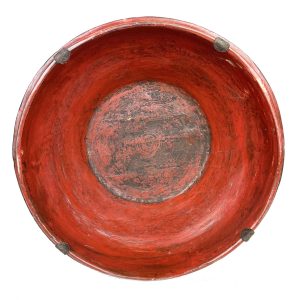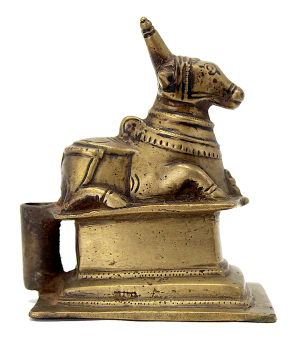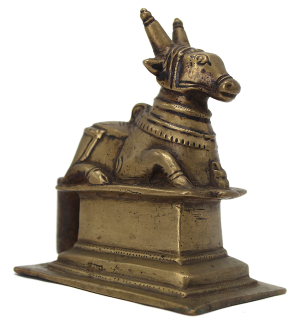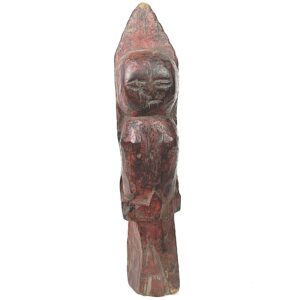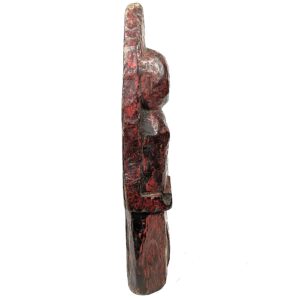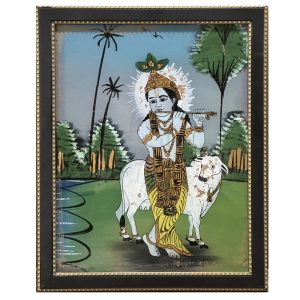Showing 37–48 of 99 results
-


$4,985.00
Ht: 17.9″ W: 4.9″ D: 4.8″ | CALL OR EMAIL FOR SHIPPING INFO
This fine set of three elegant Ming dynasty attendants—one male and two female—are in a unique category of refinement and elegance that reflects the importance and high status of the tomb, the deceased and the family for which they were made. Standing on hexagonal bases with arms folded below their chests and presenting offerings to the deceased, their clothing and parts of the bases have a rare cobalt blue glaze. (Two have yellow glazed areas and all have painted unglazed areas.) Their removable heads are highly detailed and beautifully modeled fitting inside high collars. These figures are presented and sold as a remarkable set reflecting their original presentation and condition.
-


$595.00
This Tibetan Repoussé image presents various symbols of the Enlightenment of the Shakyamuni-Buddha. He sits within a trefoil arch on a lotus base (padmapitha) under the bodhi tree in bhumisparsha mudra (earth witnessing or hand touching position) symbolizing the moment of his enlightenment legs bent in (padmasana). The detailed trefoil arch surrounding the Buddha’s head…
-


$250.00
Most Hindus have images of one or more murtis (gods and goddesses) on their home altar to help them in their daily prayers (puja), focus their attention and help visualize them. A murti is treated with the utmost respect, care and reverence but devotees never worship the objects and instead use them used only to…
-


$675.00
Ht: 9″ W: 5″ D: 3.5″ | FREE SHIPPING WITHIN CONTINENTAL U.S.!
During the Ming and Qing dynasties small images of Taoist officials and priests were often shown holding a cup of the elixir of life to place on home altars along with ancestor figures, house gods and other religious images to bring blessings (fu) to the household. By commissioning figures like this artful carving, families honored their ancestors and met their filial piety duties. Mounted on an acrylic stand.
-


$395.00
Ht: 5.125″ W: 3.75″ D: 0.625″ | FREE SHIPPING within continental U.S.
This vintage massive, heavy silver pendant represents a four armed Ganesh seated within a betel shape frame wearing a crown and reaching for modak, a rice flour sweet dumpling filled with coconut that is his favorite treat. Ganesh pendants are worn for good luck as he is the God who removes the obstacles in devotees’ lives. The coin silver chain is included.
-


$725.00
H: 8” W: 5” D4” | FREE SHIPPING!
This antique stone Tudi Gong statue was finely crafted by a local provincial artisan and reflects many traditional characteristics of this beloved lower status deity: a benevolent face, voluminous rotund belly, slouched shoulders, and holding taels to bestow wealth and fortune and maybe assurances to rural common folk. In his past he rested happily on an outdoor shrine, and would be very happy to continue doing so in a home garden to bring prosperity and an aura of past times to a new family.
-
Sale!


$375.00 Original price was: $375.00.$295.00Current price is: $295.00.
H: 8.75″ DIA: 6.75 ” | FREE SHIPPING WITHIN CONTINENTAL U.S.!
This delicate and vibrant Qing dynasty Shiwan stoneware glazed sculpture represents fresh fruit that symbolizes life and new beginnings would have been placed on a temple or home altar to represent and/or augment plates of stacked fresh fruit. Fresh fruit symbolizes life and new beginnings. These offerings are still made to honor the family’s ancestors, communicate with deities and bring prosperity, good luck and health to the home and would be an auspicious and decorative addition to any home settings where family members past and present are honored.
-
Sale!


$595.00 Original price was: $595.00.$395.00Current price is: $395.00.
H: 9.75″ W: 5″ D: 4.5″ | FREE SHIPPING within continental u.s.!
This enchanting carving depicts Nanhai Guanyin in her Cave on Mount Putuo seated in lalitsana, below a symbolic arch of draped moss with bright pigmentation and considerable gilt. Nanhai Guanyin was massively popular during the Ming/Qing dynasties and provincial wood images were made home altars throughout China. She holds scrolls representing the dharma and sutras, behind her is a vial with the tears of her humanity and parrot, her constant companion. Small Nanhai images with all these symbols in this condition are very rare.
-
Sale!


$695.00 Original price was: $695.00.$495.00Current price is: $495.00.
H: 26.25″ Dia: 12.5″ |CALL 213-568-3030 OR EMAIL [email protected] FOR SHIPPING COST
Artfully shaped hsun ok pieces to hold offerings to monks and make merit reveal much about Burmese artisans: exceptional lacquer ware skills, support for monks and devotion to Buddhism. This large elegant Hsun Ok has a flaring pedestal, lid with a finial symbolizing a Buddhist stupa and applied mythical animals and floral decorations. Early 20th century pieces with these special details are harder to find and copies abound.
-


$245.00
Nandi is among the most frequent Hindu deities worshiped in public places, temples, homes, or on a home altar throughout India. As one of Hinduism’s mythical animals, Nandi is Shiva’s vahana, (his mount that transports him), attendant and leader of his attendants and guardian of all four-footed animals. A recumbent image of Nandi on a…
-
Sale!


$85.00 Original price was: $85.00.$55.00Current price is: $55.00.
Ht: 9..5 ” W: 2″ D:1.5 ” | FREE SHIPPING WITHIN CONTINENTAL U.S.!
This antique carving of a Devi, the Sanskrit word for divine probably was a child’s toy and and a protective item. She has a tikka mark on her forehead, ample breasts – a wish for fertility-, and an upright stance asserting her position as a protective deity. It has been handled so often the wood and paint are extremely smooth with a shiny patina.
-
Sale!

$395.00 Original price was: $395.00.$325.00Current price is: $325.00.
H: 16″ W: 13″ D: 1″ | | CALL 213-568-3030 OR EMAIL [email protected] FOR SHIPPING
This vibrant glass painting of Krishna along with the panel of a Peacock (3983MCE) were insets in a highly decorated Indian wood cabinet or chest. Krishna is one of the most popular Hindu deities, beautifully depicted here in a bright yellow dhoti, peacock feather crown, and jewels in serenading his adoring gopis with his engaging flute. The unique frame complements the painting’s richness and vintage feel.
End of content
End of content

